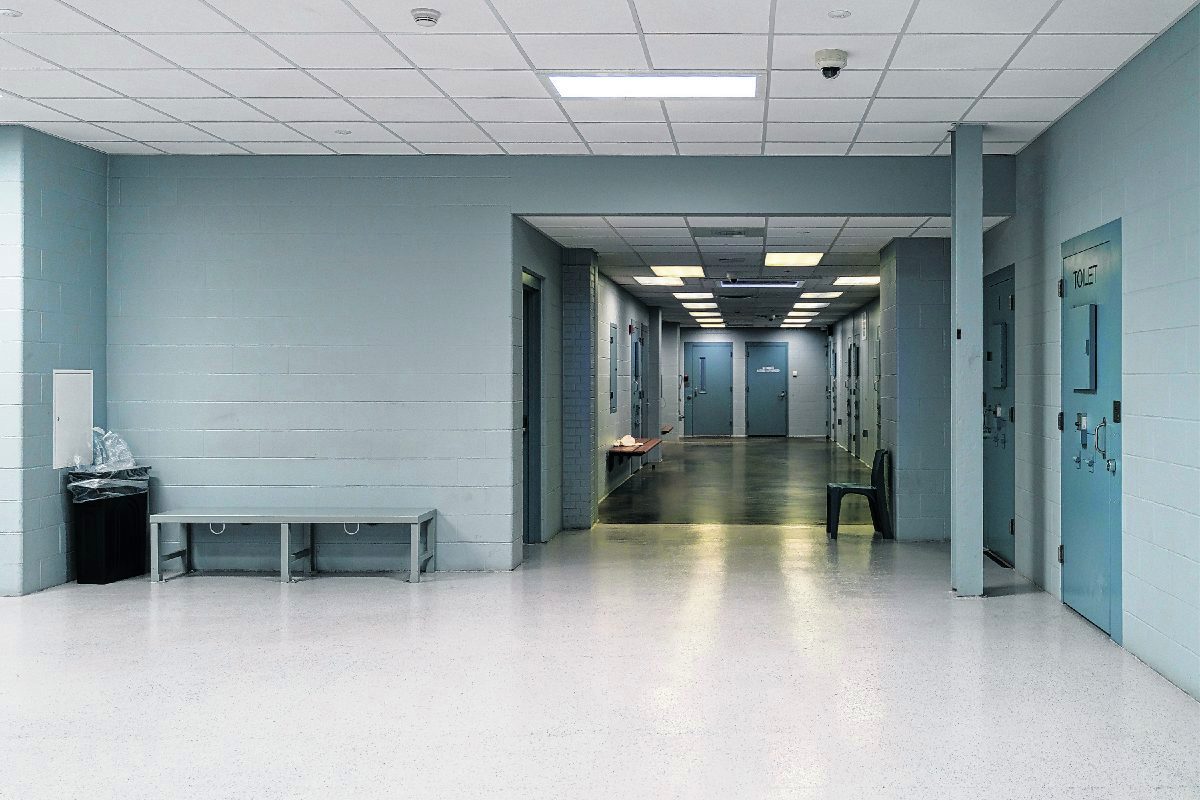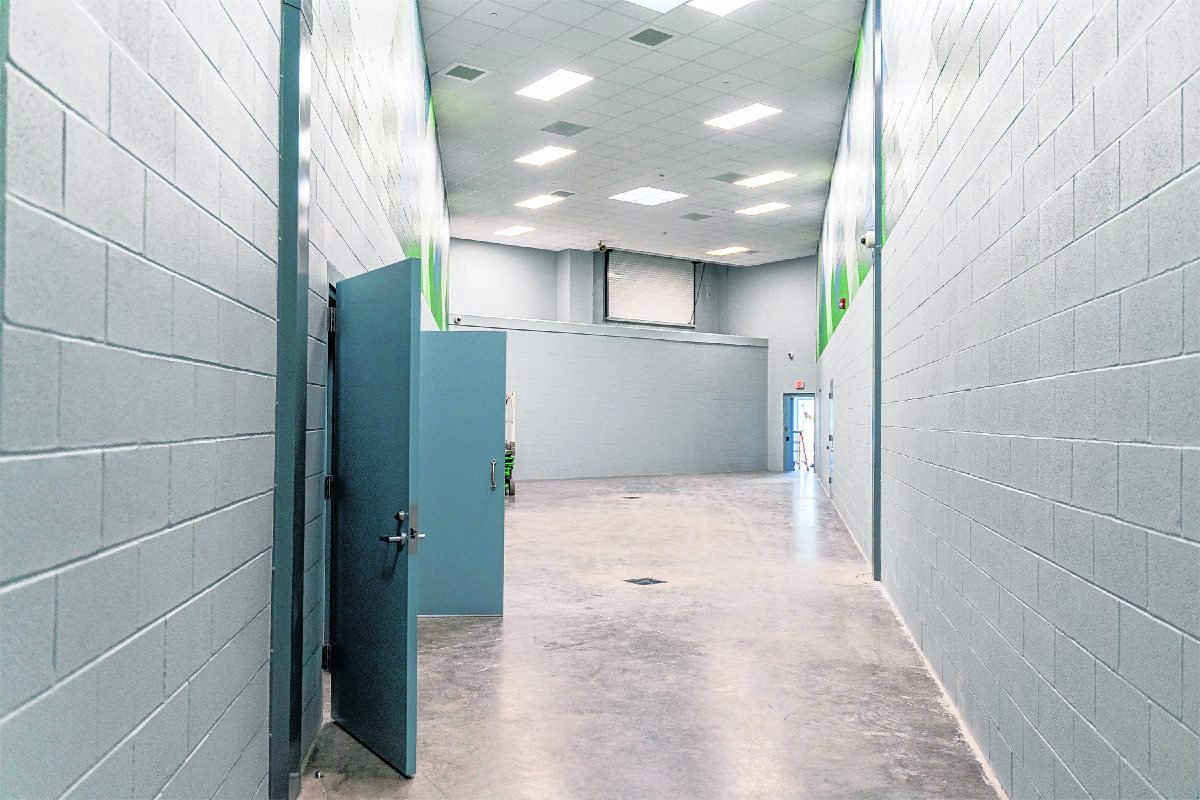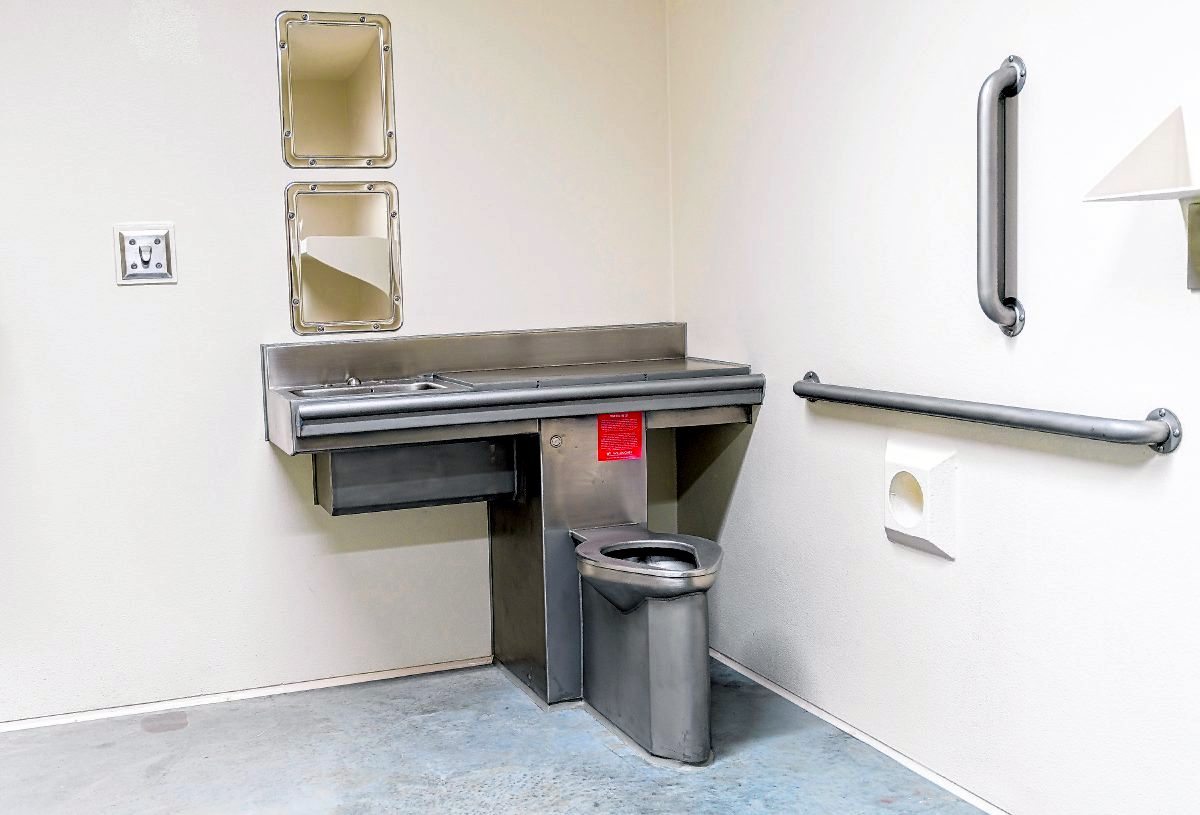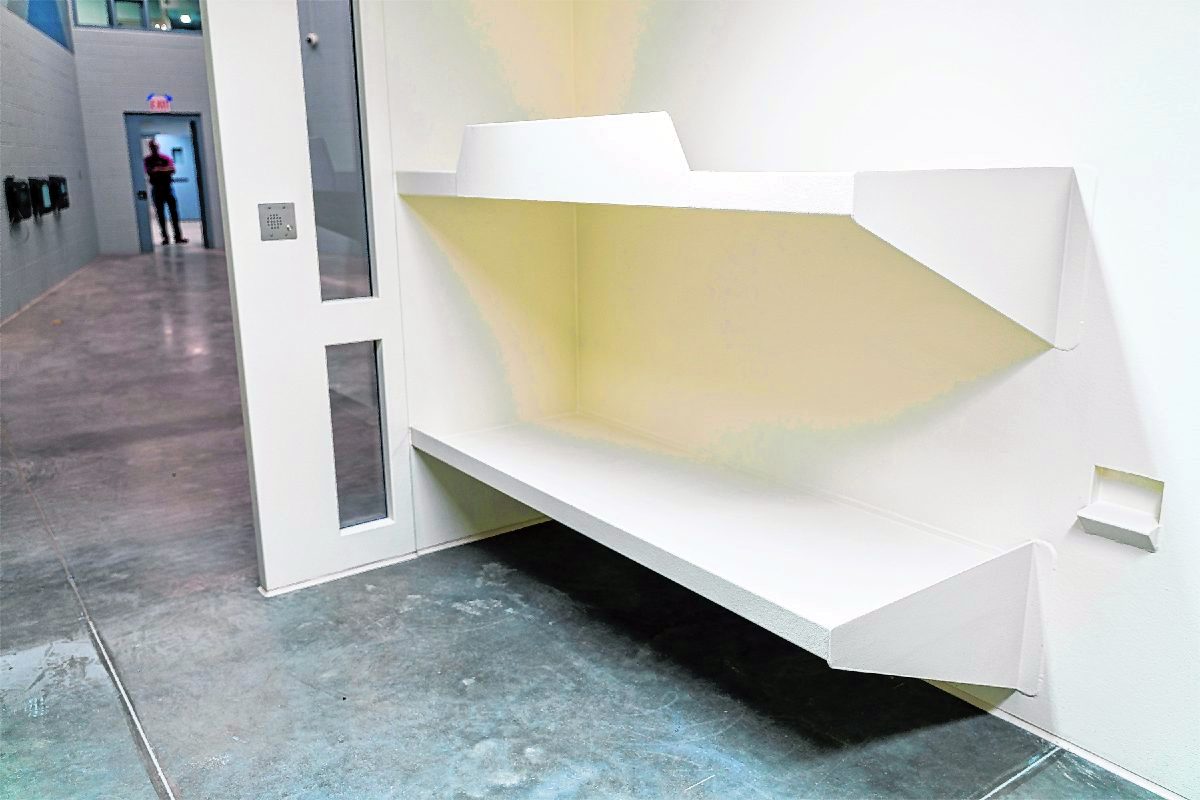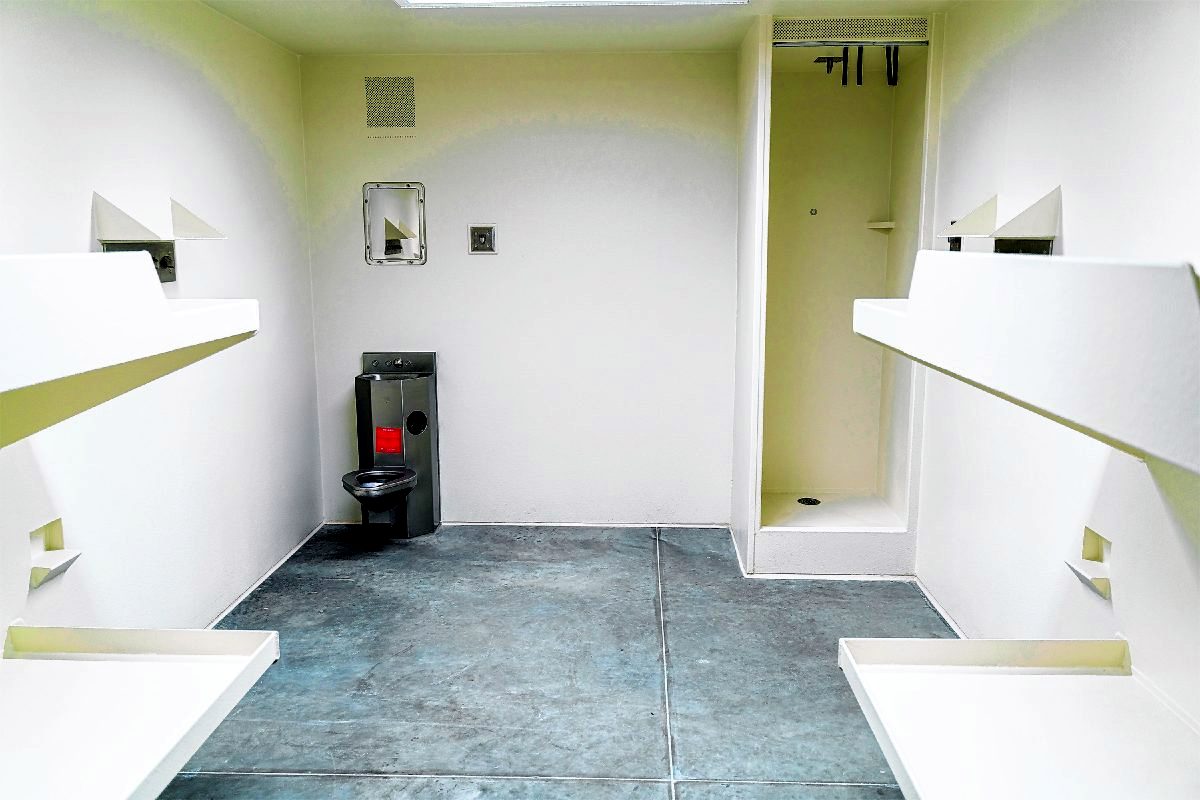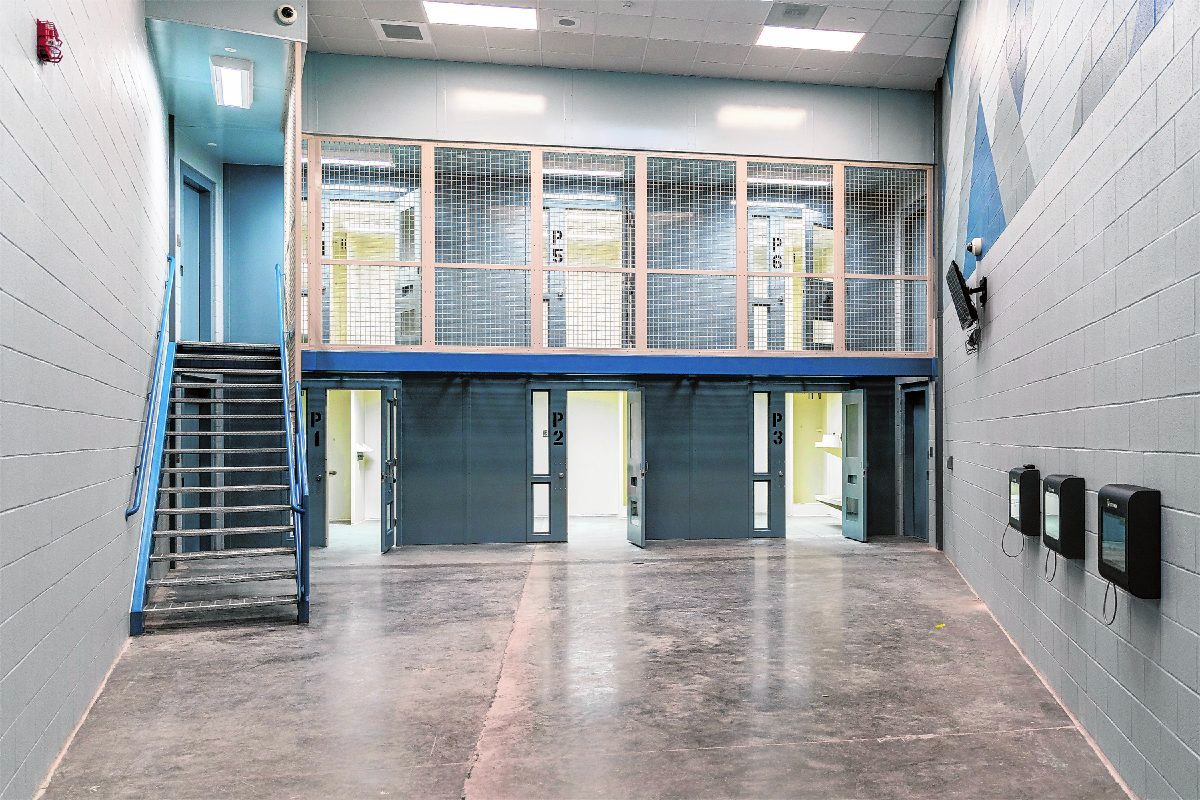Decades of overcrowding at the county jail will soon be history.
The $23.1 million project to add 264 additional beds, a new intake area, an expanded medical center and more is expected to be completed next month.
The Johnson County Justice Center addition is all but complete, with a few finishing touches being wrapped up now, including the interior hallway between the two wings of the jail.
A furniture supply delay is the only thing standing in the way of the jail addition being opened, Sheriff Duane Burgess said.
“That’s been a hold-up. COVID has been fighting us with deliveries or not having the manpower to make these items,” Burgess said.
History of overcrowding
For years, county officials and multiple sheriffs grappled with how to address chronic overcrowding at the jail, built in 1977.
As the county’s population increased, so did crime. The county had to renovate and restructure parts of the jail in response to a 1997 federal lawsuit. After the lawsuit, the jail was remodeled and a new wing was added that raised the jail’s capacity to 299 from 104 in 2002. But the population swelled further.
More beds were added in 2012, after an inspector with the Indiana Department of Correction found room for 23 more bunks at the request of Burgess, who was jail commander at the time, and then-sheriff Doug Cox.
Still, the 322-bed facility was often crowded with as many as 459 people incarcerated. In 2018, the state forced the county to take action.
The inmate population on Thursday was 353, but that number often fluctuates, Burgess said.
“When you have 322 beds, you have to think outside the box,” he said. “You’re buying different bunks to put in different locations, mattresses, (cots), and it is unsafe for employees and everyone else housed in the facility. With COVID, we have brought those numbers down, but these 264 beds are going to help us greatly.”
The jail’s soon-to-be capacity of 586 beds will support the county’s average inmate population, and leaves room for more as the county’s population continues to grow, Burgess said.
The new beds are in a new wing west of the existing jail, connected by a walkway. The addition includes about 74 additional cells across two floors.
Each cell contains two to four bunk beds that are built into the wall, along with a sink, shower and toilet. One bottom floor cell in each block has ADA bathroom fixtures.
Each cell bathroom also has limits placed on water use to avoid issues such as purposeful shower or toilet flooding. The water system has an automatic shut-off after a certain amount of toilet flushes or gallons used in the shower.
Each block has a common area with cafeteria tables, a television, video visitation monitors and a microwave, where inmates can eat meals and socialize during the day.
A new central command center overlooks the new cell blocks and inmate recreation area. The command center has a raised 360-degree view of the new block, whereas the old command center has several visual barriers.
Also in the new wing is a breakroom for jail officers, several office spaces, padded cells and classroom space for classes and support groups.
New amenities ready
Multiple renovation projects were also completed in the old wing, including additional pull-in bays for arresting officers, more office space for deputies to complete their reports, a streamlined intake area, an expanded medical center, a larger commissary and multiple virtual courtrooms.
With more inmates coming into the jail than it was designed for, the old booking and intake area was in serious need of a remodel.
Before the remodel, both created a bottleneck and a safety issue, said Andrew Barnhart, chief deputy. Previously, there was just one computer to process new inmates, and a low safety barrier between the inmates and officers. Now, there are multiple intake computers with a high barrier.
Similarly, the old medical center had one exam room and room for one nurse, which made it difficult to keep up with health care needs for up to 450 inmates, Burgess said.
“Our medical department was not large enough to handle the work they do daily. With so many inmates coming and going, we didn’t have enough capacity to do assessments,” he said. “That was one of the first items we checked off.”
The larger medical area has multiple exam rooms, with two to three nurses on staff during the day and one or two each night. A doctor is also available on an on-call basis, and other specialists such as dentists and psychiatrists come in to treat inmates regularly, Barnhart said.
Both the medical area and virtual courtrooms were priority remodels in the old wing, and construction was moved up to help jail staff fight COVID-19.
Virtual courtrooms had been in used in the old wing for more than a year, as inmates needed to appear virtually in court as the Indiana Supreme Court sought to limit COVID-19 exposure and closed courts to in-person hearings for many months.
Deputies used to have to transport a large group of inmates to the court annex. Now, they walk them across the building to the courtroom.
Reviewing the costs
A few design changes for efficiency increased the cost of the jail expansion slightly, but it was covered by the contingency fund, said Kevin Walls, county commissioner.
The overall price tag is still $23.1 million.
Walls, along with a project manager the county hired to oversee construction, watched the budget and progress closely, Walls said.
“From start to finish, it has been a three-year process. I started the committee on this in 2018 and now here we are,” he said.
It is gratifying to see the jail ready to open, Walls said.
With construction wrapping up, adding staff is the next step, Burgess said.
By the end of the year, Burgess hopes to have hired 10 additional corrections officers to support the larger facility. Three of those have already been hired, with seven openings remaining.
He is requesting funds to hire 10 more corrections officers in the 2022 budget, pending review by the Johnson County Council in the coming weeks.
The expansion, including additional staff, is being paid for with a tax increase approved in June 2019.
The 20-year tax, which took effect in October 2019, increased the local income tax to 1.2% from 1% and impacts all workers who live in Johnson County, regardless of what county they work in.




